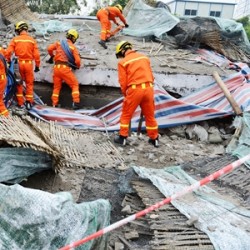Disaster preparedness has become a major concern for enterprises, organizations and individuals alike in the wake of recent crises, such as Hurricane Sandy. In order to mitigate the destruction wrought by powerful storms and other catastrophic disturbances, the U.S. Department of Health and Human Services has proposed a number of new regulations to ensure the medical facilities are ready for emergencies, The New York Times reported.
Sweeping preparedness requirements
The legislation proposed by the DHHS would establish emergency preparedness requirements effective for 17 kinds of providers across the nation, calling for potentially costly upgrades. For instance, the policy would oblige nursing homes and hospitals to secure power sources by taking steps to protect them from disruptive conditions.
"For hospitals, cooling and heating systems are as critical for life support as maintaining power," said Paul Schwabacher, a facilities management supervisor at New York University's Langone Medical Center.
New equipment may be necessary for satisfying the demands of the new rule, which urges facilities to ensure that power systems function during crises. The statutes alluded to in the DHHS legislation usually require defenses that have been put in place only recently.
The rule also demands that care providers test their auxiliary power generators annually for long-term performance. These devices have been known to cease functioning after extended use, resulting in dire consequences.
Support and Opposition
There have been mixed responses to the DHHS proposal, with some claiming that the requirements it suggests are too demanding, while others say that they need to be developed even further. Detractors have asserted that the costs to retrofit and upgrade outdated facilities cannot be covered by the $225 million in expenses projected by the government organization, according to United Press International.
The American Hospital Association, for instance, said in a member announcement that the DHHS has lowballed the amount of funding that will be needed to meet the proposed requirements.
"It will be a resource-intensive process for many providers," said Susan Waltman, Greater New York Hospital Association executive vice president.
Other organizations, such as the American Academy, have called for additional rules, The New York Times reported. AAP has requested that the DHHS include policies stipulating that hospitals must provide supplies, food and water for visiting family members and volunteers in addition to maintaining reserves for staff and patients.
Medical care facilities seeking to improve their ability to respond to disasters may consider implementing an alert and notification system to preserve communication during crises. For instance, Omnilert uses emergency messaging for the real-time distribution of valuable information.


